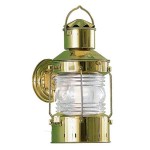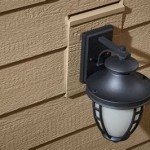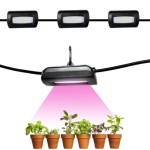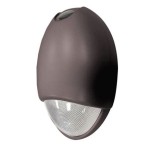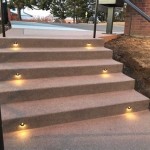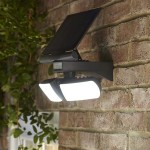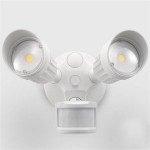```html
Outdoor Lighting Ideas For A Deck
A deck serves as an extension of the living space, providing an area for relaxation, entertainment, and enjoyment of the outdoors. Effective outdoor lighting transforms a deck from a daytime feature to a usable space after sunset, enhancing both its functionality and aesthetic appeal. Planning deck lighting requires consideration of various factors, including the size and layout of the deck, the intended use of the space, and the desired ambiance. The selection of appropriate lighting fixtures and their strategic placement are crucial for creating a safe, inviting, and visually appealing outdoor environment.
Safety and Security Considerations
Deck lighting plays a significant role in enhancing safety and security. Adequate illumination minimizes the risk of accidents, such as trips and falls, particularly on stairs, ramps, and uneven surfaces. Lighting also deters unwanted activity by increasing visibility and reducing the potential for concealed entry points. In addition to functional safety, well-lit decks contribute to a sense of security and comfort, allowing residents to enjoy their outdoor space with peace of mind.
Pathways and steps demand careful attention when planning deck lighting. Fixtures should be positioned to clearly define the edges of walkways and the risers of steps. Low-voltage path lights, recessed step lights, and post cap lights are popular choices for providing subtle yet effective illumination in these areas. Motion sensor lights can be incorporated to provide additional security, activating only when movement is detected. These lights can be particularly beneficial in areas prone to infrequent use, such as side entrances or perimeter pathways.
The selection of durable, weather-resistant fixtures is essential for ensuring the longevity and reliability of deck lighting. Outdoor lighting fixtures are exposed to the elements, including rain, snow, sun, and temperature fluctuations. Choosing fixtures constructed from materials like stainless steel, aluminum, or composite materials will help prevent corrosion and ensure optimal performance over time. Furthermore, selecting fixtures with appropriate ingress protection (IP) ratings, which indicate their resistance to water and dust, is crucial for maintaining their functionality and safety.
Types of Deck Lighting Fixtures
A wide variety of lighting fixtures are available for deck applications, each offering distinct advantages and aesthetic qualities. The choice of fixture depends on the specific lighting needs of the deck, the desired ambiance, and the overall design aesthetic of the outdoor space.
String Lights: String lights provide a festive and inviting ambiance, making them a popular choice for decks used for entertaining. These lights typically consist of a series of small bulbs strung along a wire, which can be draped across railings, posts, or overhead structures. String lights are available in various styles, including Edison-style bulbs, globe lights, and LED options. They can create a warm and welcoming atmosphere, ideal for social gatherings or casual relaxation.
Post Cap Lights: Post cap lights replace or augment existing deck post caps, providing subtle and stylish illumination. These fixtures are typically low-voltage and can be powered by either hardwired connections or solar energy. Post cap lights offer a convenient and aesthetically pleasing way to add perimeter lighting to a deck, defining its boundaries and enhancing its visual appeal.
Recessed Deck Lights: Recessed deck lights are installed flush with the deck surface, providing discreet and unobtrusive illumination. These fixtures are ideal for highlighting specific areas of the deck, such as pathways, steps, or seating areas. Recessed lights are available in various sizes and shapes, allowing for customization and integration into the overall deck design.
Spotlights and Floodlights: Spotlights and floodlights provide focused or broad illumination, respectively, and are typically used to accent architectural features, landscaping, or outdoor art. Spotlights can be used to highlight specific plants or sculptures, while floodlights can provide general illumination for larger areas of the deck. These fixtures are often adjustable, allowing for precise control over the direction and intensity of the light.
Wall Lights: Wall lights are mounted on the exterior walls of the house or on adjacent structures, providing ambient or task lighting for the deck. These fixtures are available in various styles, from traditional lanterns to modern sconces, and can be used to create a welcoming entrance or to illuminate specific areas of the deck. Wall lights can also be used to enhance the architectural details of the house, adding visual interest to the outdoor space.
Strip Lighting: LED strip lighting offers a versatile and energy-efficient way to add subtle illumination to various areas of the deck.These flexible strips can be installed under railings, along steps, or beneath benches, creating a soft glow that enhances the ambiance of the deck. LED strip lighting is available in a wide range of colors and brightness levels, allowing for customization and control over the lighting effect.
Lighting Techniques and Strategies
Beyond the selection of appropriate fixtures, the application of effective lighting techniques is essential for achieving the desired ambiance and functionality on a deck. Understanding different lighting strategies and their effects can help create a visually appealing and welcoming outdoor space.
Ambient Lighting: Ambient lighting provides general illumination for the entire deck area, creating a base level of light that allows for safe navigation and comfortable use of the space. String lights, post cap lights, and wall lights are commonly used to provide ambient lighting on decks. The goal is to create a soft, even glow that is not too bright or harsh, allowing for comfortable socializing and relaxation.
Task Lighting: Task lighting provides focused illumination for specific activities, such as cooking, dining, or reading. Outdoor kitchen areas may require brighter task lighting, while dining areas may benefit from softer, more intimate lighting. Adjustable spotlights or pendant lights can be used to provide task lighting in these areas, allowing for customized illumination based on specific needs.
Accent Lighting: Accent lighting is used to highlight specific features of the deck or the surrounding landscape, adding visual interest and creating a focal point. Spotlights, floodlights, and uplights can be used to accent trees, shrubs, architectural details, or outdoor art. The strategic placement of accent lighting can transform a deck into a visually stunning outdoor space, emphasizing its unique characteristics and enhancing its overall aesthetic appeal.
Layered Lighting: A layered lighting approach combines ambient, task, and accent lighting to create a dynamic and versatile outdoor environment. By layering different types of lighting, it is possible to create a space that is both functional and visually appealing, adapting to different activities and moods. A well-layered lighting scheme allows for customization and control over the overall lighting effect, creating a comfortable and inviting outdoor space.
Considerations for Color Temperature: Color temperature, measured in Kelvin (K), affects the overall ambiance and mood of the deck lighting. Warmer color temperatures (2700K-3000K) create a cozy and inviting atmosphere, while cooler color temperatures (4000K-5000K) provide a brighter and more energetic feel. The choice of color temperature depends on the desired ambiance and the intended use of the deck. Warmer color temperatures are generally preferred for relaxing outdoor spaces, while cooler color temperatures may be more appropriate for task-oriented areas.
Smart Lighting Systems: Smart lighting systems offer advanced control and customization options for deck lighting. These systems allow for remote control of lighting fixtures via smartphone or tablet, enabling users to adjust brightness, color, and timing. Smart lighting systems can also be integrated with other smart home devices, such as security systems and voice assistants, providing enhanced convenience and control. Some smart lighting systems offer features like dimming, color changing, and scheduling, allowing for customized lighting scenes that can be tailored to specific events or moods. The integration of smart technology into deck lighting can enhance the functionality and user experience of the outdoor space.
Effective outdoor lighting for a deck involves a careful consideration of safety, fixture selection, and lighting techniques. By prioritizing safety, choosing appropriate fixtures, and applying effective lighting strategies, it is possible to transform a deck into a functional, inviting, and visually appealing outdoor space that can be enjoyed year-round.
```
8 Best Outdoor Deck Lighting Ideas To Transform Your Home

8 Deck Lighting Ideas For Your Outdoor Living Space

7 Brilliant Deck Lighting Ideas Your Outdoor Clients Will Lov In Lite

Get More From Your Home With These Outdoor Deck Lighting Ideas Borst Landscape Design

Deck Railing Lighting Ideas Decksdirect

Ideas For Incorporating Deck Lighting Into Your Designs Amazing Decks

12 Ideas For Lighting Up Your Deck Family Handyman

7 Outdoor Deck Lighting Ideas Premier Of Md Dc Va

Types Of Deck Lights Cool Lighting Ideas Ytvfeyu Outdoor

Outdoor Lighting Ideas To Brighten Up Your Deck
Related Posts
